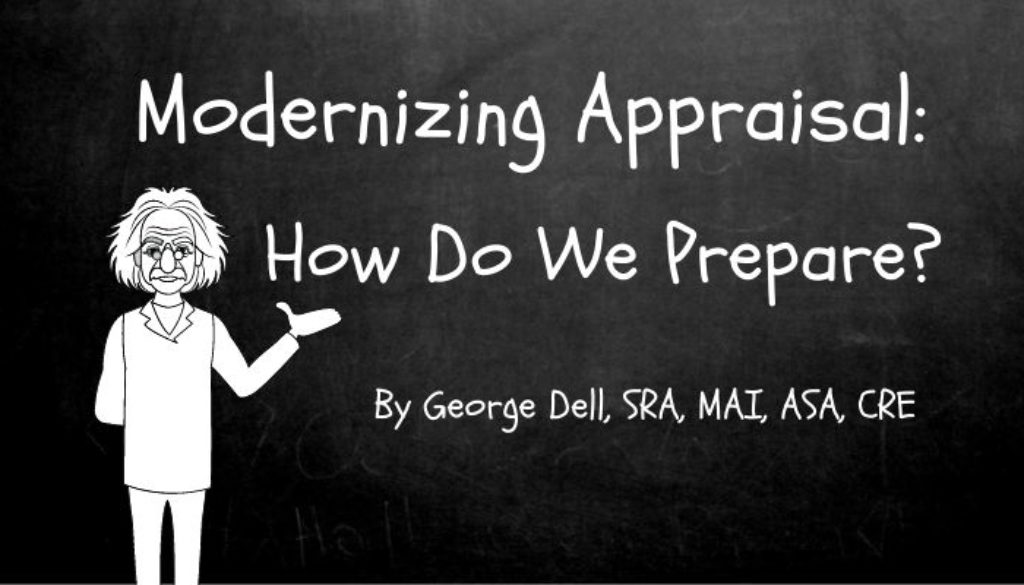We have heard a lot about “modernizing” the appraisal process, particularly from the GSE’s (Fannie Mae and Freddie Mac). What is clear, is that the path is not clear.
The GSEs, pressing for an improved valuation product, are in a difficult situation. On one hand, they are supposed to cooperate. On the other hand, they are supposed to compete.
The FHFA (Federal Housing Finance Administration) overseeing the GSEs recently did a thorough job obtaining input from stakeholders, and appears to be on track for some meaningful changes which truly benefit the public good – including bringing appraisal into the 20th century.
So what are these coming modernizing changes? And what can we do to help? And what can the individual appraiser do to prepare?
The changes are well known: 1) Complete data; 2) Computation power; 3) Cognition.
Complete data enables elimination of subjective-selection bias. Computation enables sharpened expert modeling decisions. Cognition visualization enables market measurement in place of comparable comparison – and optimizing the brain/computer team.
Coming changes require education in the above areas applying modern analytics software, with visualization of markets in place of comp comparison, forms, and spreadsheet cells. The modern asset analyst appraiser must know how to move toward reproducible, auditable product, including risk/reliability quantification.
These three changes comprise the essential elements for appraisal “modernizing.”
Our professional organizations can move (finally) toward “reengineering the appraisal process” as has been promised by leaders. (While education committees continue to double down on the “established practices and procedures” – the way we’ve always done it.)
The Appraisal Foundation can move to replace subjective “credibility” with measurable reliability – in particular to replace the “peer’s actions” and “client’s expectations” as key elements of work-scope “acceptability.”
The FHFA GSEs, VA, and HUD can begin to require real data analysis, in lieu of opinion judgment. Sharpened specified judgment in place of opinion. The days of “Trust me, I know a good comp when I see one” must be behind us. We have the tools, the models, and the ability to implement. The time is now. State and federal regulators must understand there are minimal defined ‘violations’ in USPAP (Uniform Standards of Professional Appraisal Practice), the rest are all the ‘opinion’ of the reviewer.
The individual appraiser can embark on a self-education program. The statistics are minimal – only descriptive summary numbers, like mean, median, range, and standard deviation are needed. The difficult and convoluted inferential statistics are not necessary for valuation (even as they have been brought into appraiser education and even licensing requirements). The science of data is basic, and generally follows the traditional appraisal process. The modern differences are as above: Completeness, Computation, and Cognition through visualization (like graphs). Finally, a willingness to learn new software, such as R, using the RStudio user interface.
The public good requires real action, a willingness to look beyond the traditional body of knowledge, toward the science of data analysis. Toward sharpened expert judgment. Toward the possibility to “help prevent the next economic meltdown.”
